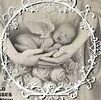For many families, the clothes their loved one is dressed in for burial are as important as any other aspect of the funeral. Dressing a deceased person in their final outfit is a chance for family members to honor their wishes and say goodbye with dignity. Traditionally, a dress or suit has been the clothing of choice. In recent years, however, a number of people have begun to choose more casual outfits—often referred to as funeral robes—for their beloved ones who are being laid to rest. The outfits are often handmade by individuals and groups, with a variety of materials used and colors chosen to symbolize a particular personality, lifestyle, or even religion.
In addition to the personal meaning that the clothing may hold, it’s important to consider religious guidelines and customs when choosing attire for a loved one. Many faith traditions have specific guidelines for the type of clothing that can be worn for a funeral and burial. For example, some religions prefer clothing with long sleeves or that is not revealing, while others have specific colors that carry spiritual significance.
When deciding on an outfit, it’s also important to keep in mind that the deceased might have lost or gained weight over time and that rigor mortis can cause the body to stiffen up. For this reason, it is often better to supply a set of undergarments with the outfit, especially when the burial service will include a viewing.
Some companies specialize in designing burial gowns for the modern era. For instance, the company Garments for the Grave combines couture and heirloom-sewing techniques to create one-of-a-kind garments. The company is also an advocate for green and natural burials, with its garments made from biodegradable fabrics.
Other designers are using a similar approach to design a line of clothing for the deceased, such as Mark Mitchell who uses his background in theatrical costume to inspire him in creating garments that are both beautiful and functional. His collection includes a satin quilted bathrobe and a floral burial shroud, as well as a cravat and a smock with embroidered flowers that can be slipped over the top of a casket.
For those who want to make their own funeral outfits, there are a number of organizations that offer donated material for making such clothing. One example is Real Imprints, which is a nonprofit that accepts wedding gowns and transforms them into burial gowns for infants who are stillborn or die in the NICU. The dresses are then given to parents who have lost a small babe.
The other way to find burial attire for a loved one is to look into the closets of family members who have died. In some cases, the deceased might have left instructions in their will or spoken to a family member about what they would like to be buried in. In these instances, following the deceased’s desires makes the process easier. Other times, the deceased might have a favorite pair of pajamas or negligee that is being kept to be put on when they are finally laid to rest.
